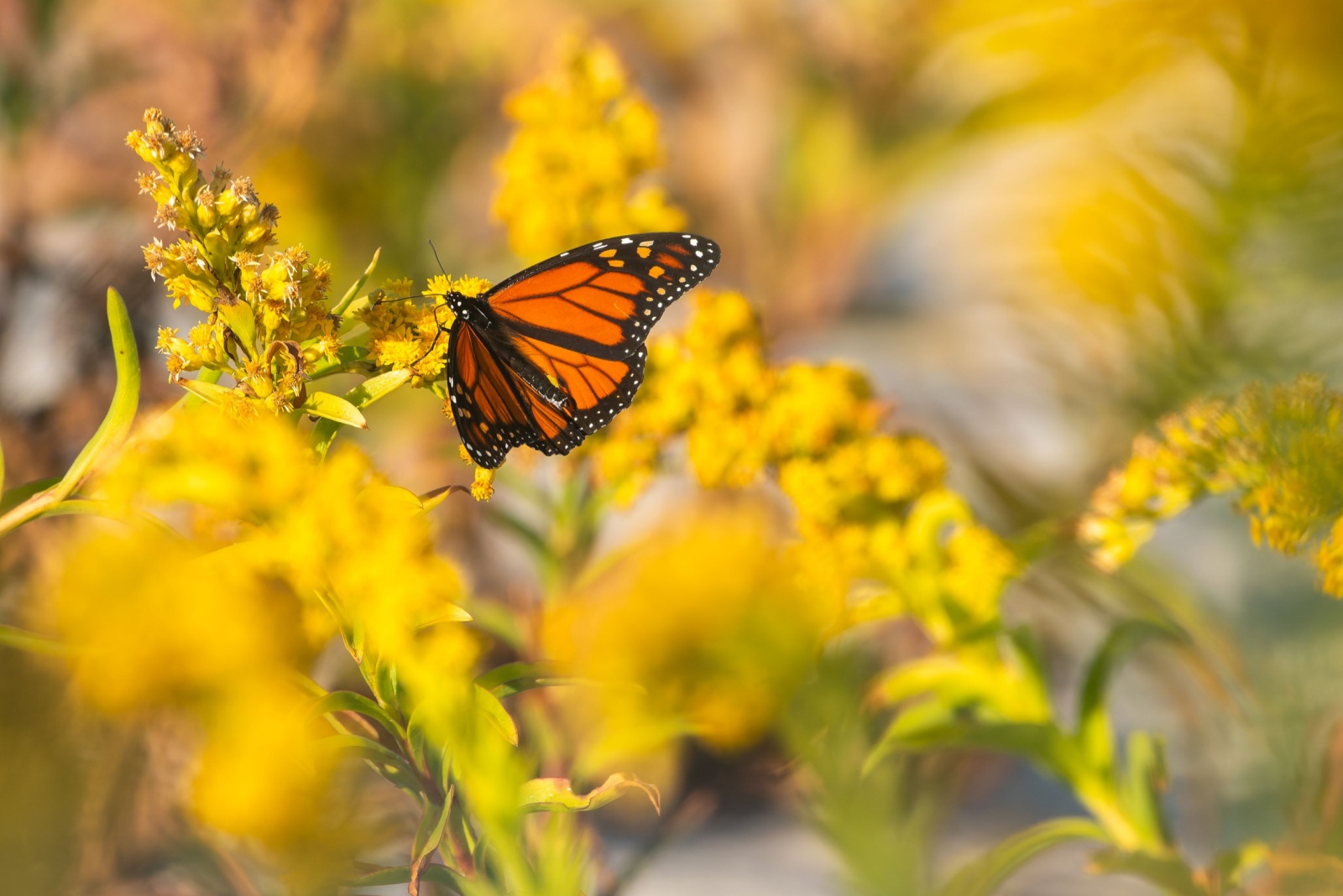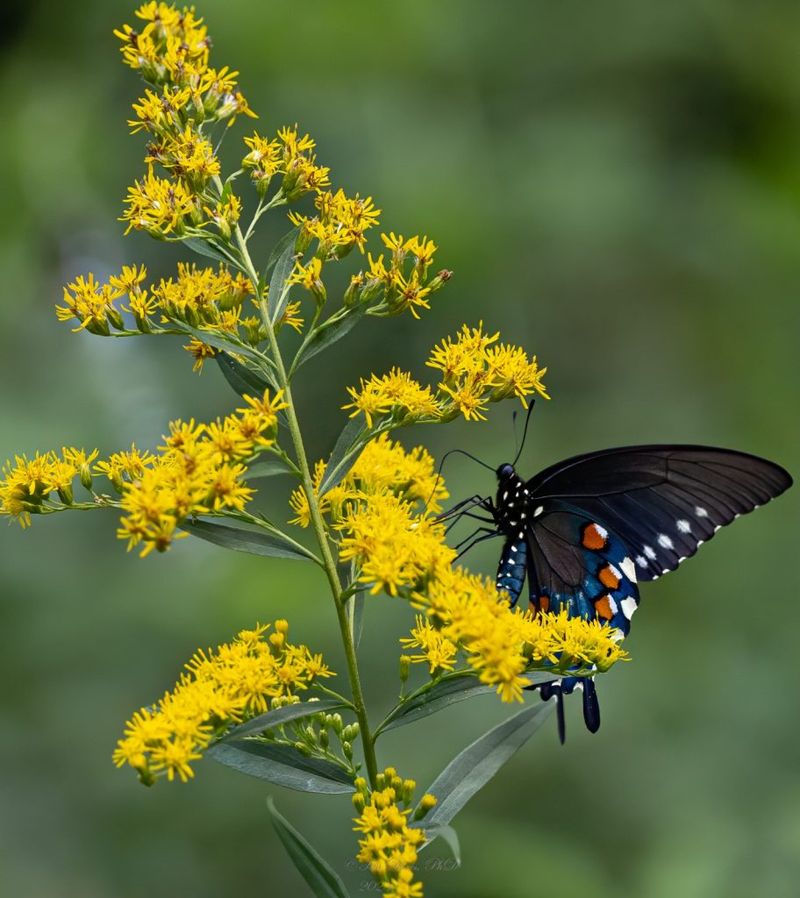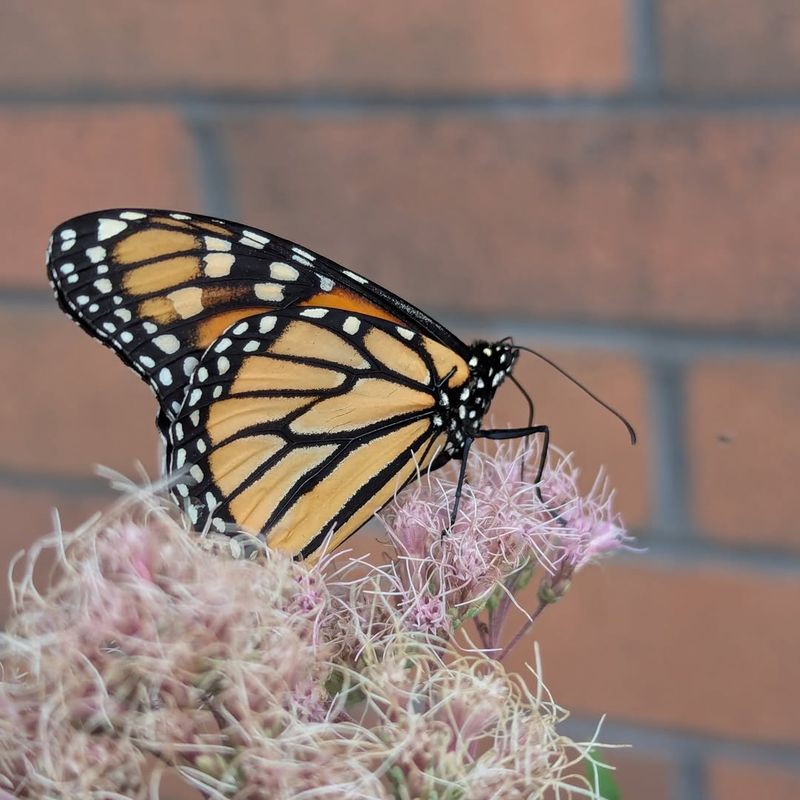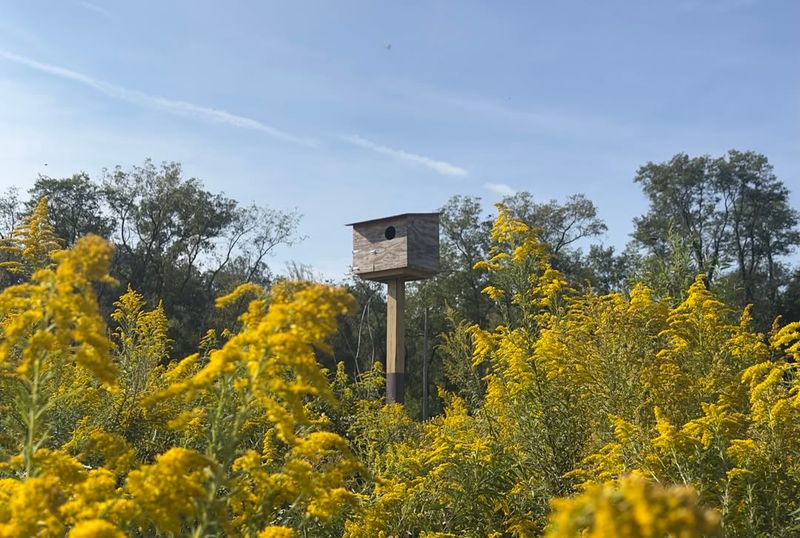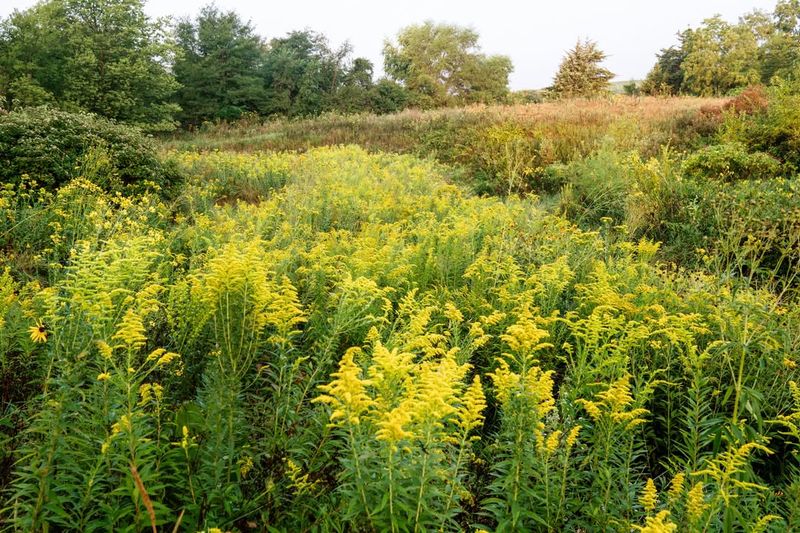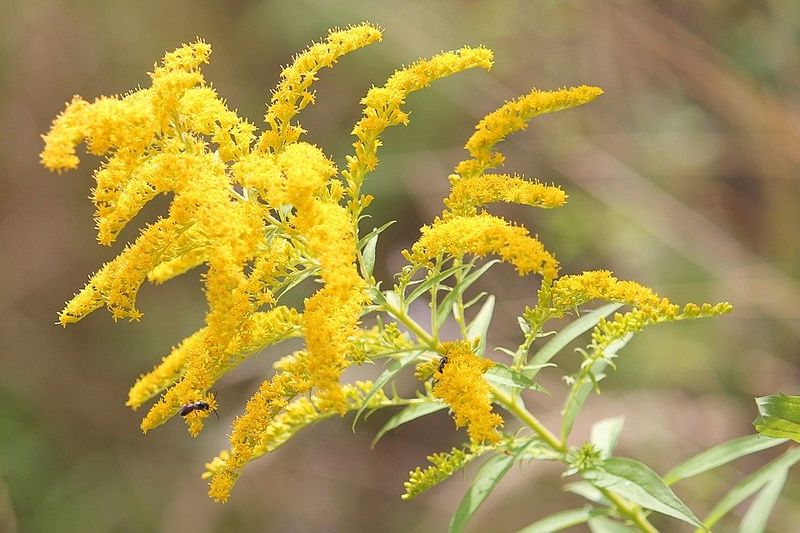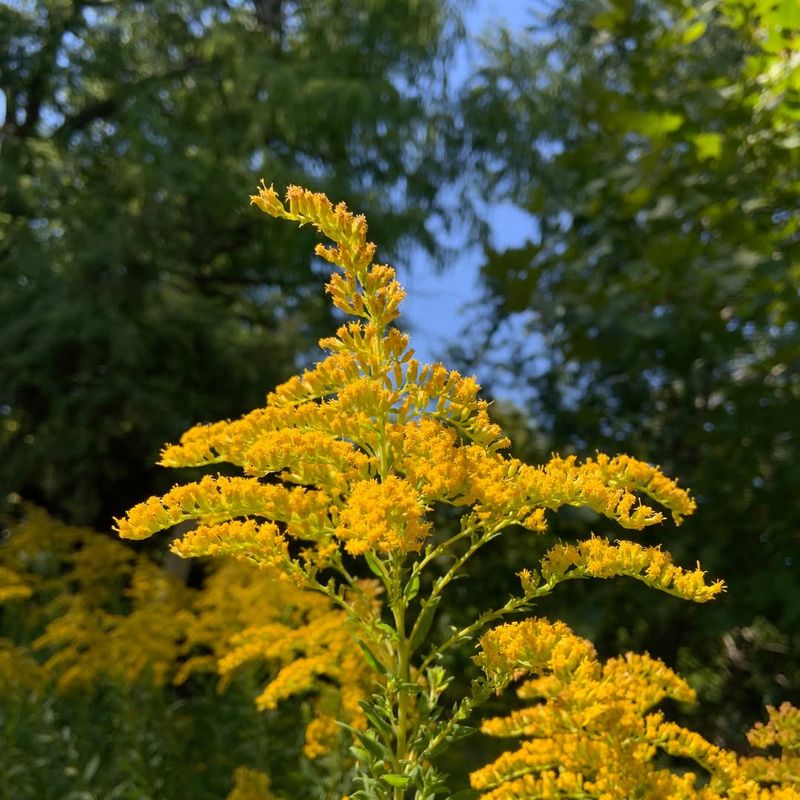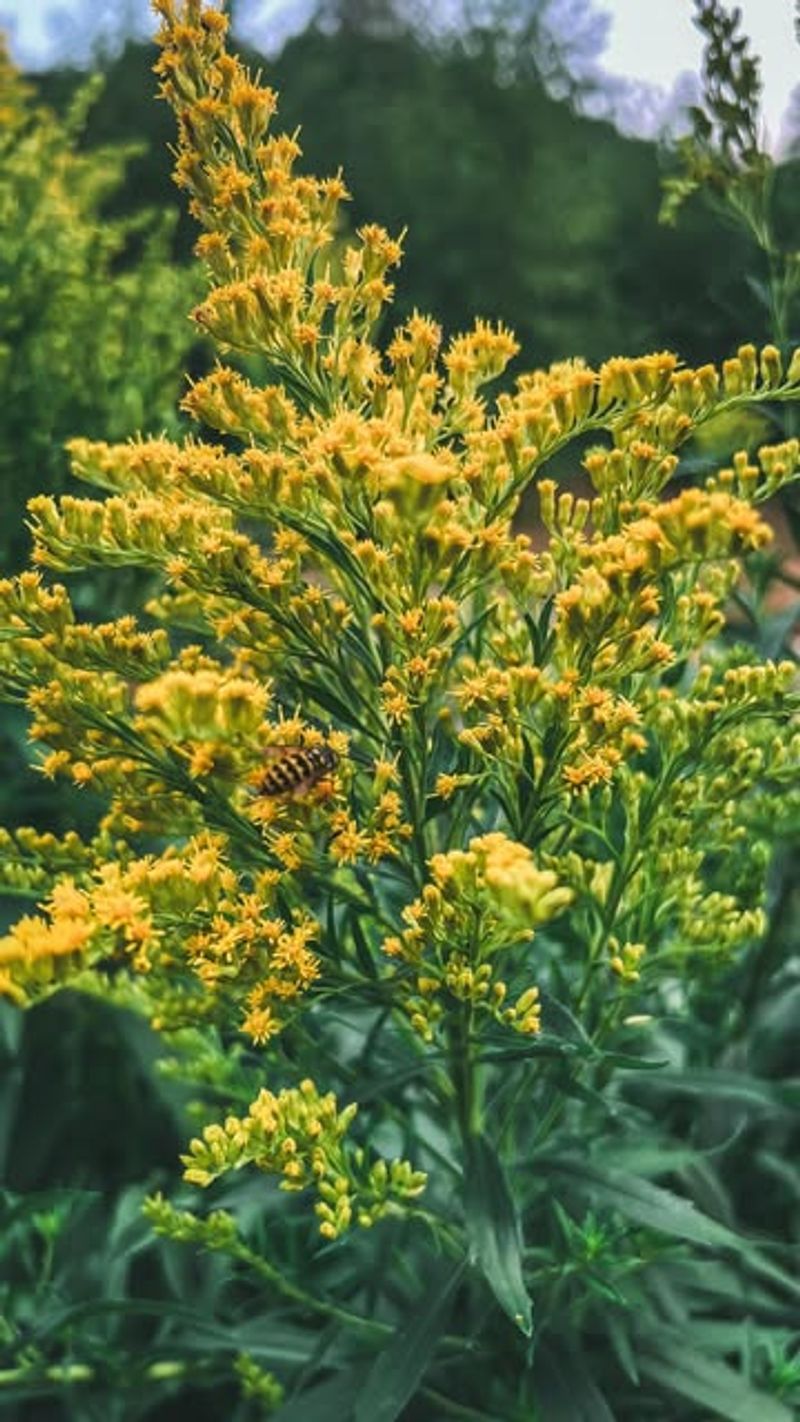Georgia gardens are coming alive again with colorful butterflies, and one bright yellow plant deserves much of the credit. Goldenrod, a native wildflower that blooms in late summer and fall, has become a lifeline for butterflies struggling to survive in modern landscapes.
Understanding why this plant matters can help you transform your own yard into a butterfly haven.
1. Goldenrod Gets Blamed For Allergies It Doesn’t Cause
Most people wrongly accuse goldenrod of triggering their sneezing fits every fall. Ragweed actually causes those allergy problems since it releases lightweight pollen that floats through the air during the same season.
Goldenrod produces heavy, sticky pollen that insects carry from flower to flower, so it rarely becomes airborne. Because both plants bloom simultaneously, goldenrod takes the blame simply for being more visible with its showy yellow flowers. Understanding this difference helps gardeners appreciate goldenrod instead of removing it unnecessarily from their yards.
2. Native Butterflies Depend On Goldenrod For Survival
Monarch butterflies need goldenrod nectar to fuel their incredible migration journey southward each autumn. Without this energy source, many wouldn’t survive the thousands of miles they must travel to reach their winter homes.
Swallowtails, fritillaries, and painted ladies also rely heavily on goldenrod when other flowers have finished blooming. Late-season nectar becomes scarce in Georgia yards, making goldenrod essential for butterfly populations trying to build up reserves before winter. Planting goldenrod creates a critical refueling station that supports multiple species simultaneously.
3. Over 100 Goldenrod Species Grow Across North America
Goldenrod diversity surprises most gardeners who assume all varieties look identical. Scientists have identified more than 100 different species across the continent, each with unique characteristics and growing preferences.
Georgia hosts several native varieties including sweet goldenrod, which releases a pleasant anise-like fragrance when crushed. Some species reach six feet tall while others stay compact at two feet, giving gardeners options for different landscape needs. Choosing the right variety for your specific soil and sunlight conditions ensures better growth and more butterfly visitors throughout the season.
4. Goldenrod Thrives In Poor Soil Where Other Plants Struggle
Gardeners love goldenrod because it flourishes in terrible soil conditions that kill most ornamental plants. Clay, sand, and rocky ground don’t stop this tough native from producing beautiful blooms year after year.
Drought tolerance makes goldenrod perfect for Georgia’s unpredictable weather patterns and water restrictions. Once established, the deep roots find moisture even during dry spells without requiring supplemental watering. Low-maintenance gardening becomes possible when you choose plants naturally adapted to local conditions rather than fighting nature with constant amendments and irrigation systems.
5. Indigenous Peoples Used Goldenrod As Traditional Medicine
Long before modern medicine existed, Native American tribes valued goldenrod for treating various health conditions. Cherokee healers prepared teas from the leaves to reduce fevers and ease digestive troubles in sick community members.
Some tribes applied crushed goldenrod to wounds because they noticed it helped reduce swelling and speed healing. While we shouldn’t replace doctor visits with plant remedies today, this history shows how deeply goldenrod connects to the land and its original inhabitants. Respecting these traditional uses adds meaningful depth to our appreciation of native plants in modern landscapes.
6. Goldenrod Blooms When Most Garden Flowers Have Finished
August through October brings golden color to Georgia yards precisely when most gardens look tired and brown. Spring and early summer flowers have already dropped their petals, leaving pollinators desperately searching for food sources.
Goldenrod fills this critical gap by producing abundant nectar during a time when butterflies need it most. Extending your garden’s blooming season helps more than just butterflies—bees and other beneficial insects also benefit from late-season food sources. Strategic planting that includes early, mid, and late-season bloomers creates a truly wildlife-friendly landscape that supports biodiversity throughout the entire growing season.
7. Growing Goldenrod Actually Improves Your Garden Ecosystem
Beneficial insects like ladybugs and lacewings use goldenrod as hunting grounds for garden pests. These helpful predators feed on aphids and caterpillars that damage vegetables and ornamental plants throughout your yard.
Native plants like goldenrod support complex food webs that keep pest populations naturally controlled without chemical sprays. Birds visit goldenrod patches seeking insects to feed their babies, creating a cascade of wildlife activity. Building a balanced ecosystem takes time, but starting with a few native plants like goldenrod sets the foundation for a healthier, more resilient garden that practically takes care of itself.

